India@2023: Climate Change
Why India Should Lead By Example, Not Exhortation
By Shyam Saran, PM’s Special Envoy on Climate Change (2007-2010)
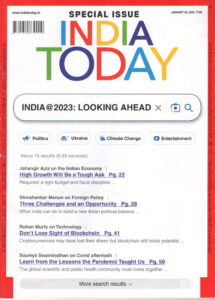
India cannot bring about a change overnight, but it can reorient its development on an ecologically more sustainable path via a long-term strategy with clear intermediate milestones.

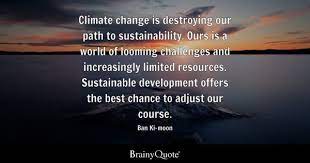 Prime Minister Narendra Modi announced an important initiative at the Glasgow Climate summit in 2021, entitled LiFE or Lifestyle for the Environment. This seeks to mobilise a worldwide movement for the adoption of a lifestyle that preserves the ecological integrity of our planet. It acknowledges that at the heart of the current ecological crisis is the value system underlying our current lifestyles. Unless this value system is transformed, there is no likelihood of reversing the ecological crisis. The prime ministers initiative must be incorporated in India’s own economic growth strategy to be credible and an example to other countries. India needs to articulate a “vision of a new path of development”, in the words of Nicholas Stern. This new path remains to be spelt out.
Prime Minister Narendra Modi announced an important initiative at the Glasgow Climate summit in 2021, entitled LiFE or Lifestyle for the Environment. This seeks to mobilise a worldwide movement for the adoption of a lifestyle that preserves the ecological integrity of our planet. It acknowledges that at the heart of the current ecological crisis is the value system underlying our current lifestyles. Unless this value system is transformed, there is no likelihood of reversing the ecological crisis. The prime ministers initiative must be incorporated in India’s own economic growth strategy to be credible and an example to other countries. India needs to articulate a “vision of a new path of development”, in the words of Nicholas Stern. This new path remains to be spelt out.
The BJP-led government often harks back to India’s ancient glories, its civilizational brilliance and ageless wisdom. Indian culture treats nature as a mother, a source of nurture and of beauty in all its myriad manifestations. This is the opposite of the driver of modern industrial civilisation, which regards Nature as a dark force to be harnessed and conquered to serve humanity. It is this attitude of mind that has led to the ravaging of our planet, the destruction of vast expanses of forests, the pollution of our rivers and oceans and the continuing extinction of many of the planet’s diverse living species. Just 4 per cent of the living mammals on the planet are wild animals; 60 per cent are domesticated livestock, such as cattle, pigs and sheep and 36 per cent are humans. Domesticated livestock are bred on an industrial scale in congested spaces, leading to outbreaks of disease that must be controlled through large-scale use of antibiotics and other toxic drugs. These then find there way into the food chain, causing mounting health problems. We are trapped in a vicious circle, which is inherent in our production and consumption systems. Climate change is only one dimension of the ecological crisis and will not be solved only through the reduction of carbon emissions emanating from fossil fuel use.
India, too, is trapped in this vicious circle. It cannot bring about a change overnight, but it can reorient its development towards an ecologically more sustainable path by formulating a long-term strategy with clear intermediate milestones. The Long-Term strategy to achieve India’s target of Net Zero of carbon emissions by 2070, which India submitted at COP-27, is a disappointment in this respect.
What are some things India could do to translate LiFE into practical action?
In a democracy like India, all citizens are entitled to the right to mobility. This is different from the entitlement to owning and running a vehicle. The current density of vehicle penetration in India is 32 per 1000, while it is 800 per 1000 in Europe and 900 in the US. If India aspired to even a fraction of this vehicle density, not all the oil in the world would be sufficient. Even if it wre, there would simply be neither room to park the car nor enough roads and highways to run them on. Electric cars are not an answer since power to run them must come from some energy, even if it is not fossil fuels. The sustainable provision of mobility would seek to promote efficient and affordable public transportation while discouraging private car ownership through higher taxation. The large sums of money being spent on constructing six-lane highways and urban flyovers would instead be used to develop efficient rail and river transport. India needs a completely revamped transportation strategy. This must be an integral component of the LiFE initiative.
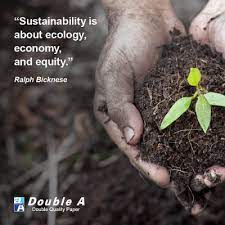
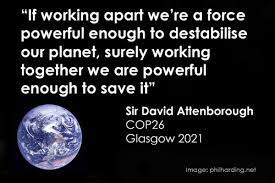 India is still predominantly an agricultural country – agriculture provides livelihood for 58 per cent of its 1.4 billion population. The country is still locked into a strategy of intensive agricultural development programme (IADP), which harks back to the Green Revolution of the 1960s. Successful at the time, it has been yielding diminishing returns for several decades now. The Green Revolution involved the use of hybrid wheat and rice seeds, coupled with the intensive use of chemical fertilisers and water to assure high yields. Dense cropping attracted pests, which had to be dealt with the increasing use of toxic pesticides. Over time, the natural fertility of the soil has declined, necessitating progressively larger infusions of fertilisers and water .The water table in most areas has fallen precipitously, creating acute water scarcity. The use of chemical fertilisers and pesticides has led to the contamination of water supplies with serious effects on human and animal health. Farmers using such toxic chemicals hardly ever use protective clothing or shields and fall prey to a variety of skin, respiratory and eye diseases. Many farming families have been bankrupted by huge health costs rather than crop failure. Subsidies for fertilisers and pesticides only compound the crisis.
India is still predominantly an agricultural country – agriculture provides livelihood for 58 per cent of its 1.4 billion population. The country is still locked into a strategy of intensive agricultural development programme (IADP), which harks back to the Green Revolution of the 1960s. Successful at the time, it has been yielding diminishing returns for several decades now. The Green Revolution involved the use of hybrid wheat and rice seeds, coupled with the intensive use of chemical fertilisers and water to assure high yields. Dense cropping attracted pests, which had to be dealt with the increasing use of toxic pesticides. Over time, the natural fertility of the soil has declined, necessitating progressively larger infusions of fertilisers and water .The water table in most areas has fallen precipitously, creating acute water scarcity. The use of chemical fertilisers and pesticides has led to the contamination of water supplies with serious effects on human and animal health. Farmers using such toxic chemicals hardly ever use protective clothing or shields and fall prey to a variety of skin, respiratory and eye diseases. Many farming families have been bankrupted by huge health costs rather than crop failure. Subsidies for fertilisers and pesticides only compound the crisis.
Despite proven and sustainable alternatives being available, Indian agriculture is locked into a pattern of production that has long outlived its utility and is poisoning our water sources, burning our soils and bringing death and disease to our rural population, even while making agriculture a significant source of greenhouse gas emissions. A new and sustainable strategy of agricultural development focused on making the farmer a viable economic agent rather than targeting only crop yields is the need of the hour. Successful experiments, for example, from Andhra Pradesh could be scaled up but then this means confronting the powerful fertiliser and pesticide lobbies in the country. India’s experience in this critical field could become a model fro many countries in Asia and Africa that suffer from similar challenges.
In aspiring to the role of a global model, India should take the lead on climate and ecology in the Indian subcontinent. As the largest, most capable country in its region, India can help evolve a South Asian Climate Change Action Plan and an Ecological Integrity Plan. The melting of glaciers in the Himalayas is advancing relentlessly and, if unchecked, could turn the subcontinents perennial rivers into seasonal rain-fed streams. Sea-level rise due to global warming will not only pose an existential threat to the island countries of Sri Lanka and the Maldives, but also threaten deltaic plains in Bangladesh, India and Pakistan. The rivers of the subcontinent are living systems and cannot be fragmented into national flows as if they were pieces of private property. Only cross-national river basin management can work. Our region is one of the biodiversity hotspots of the world, with a diversity of flora and fauna unmatched anywhere in the world. This rich biodiversity is being degraded through the wanton cutting down of forests and the encroachment of human populations into the habitats of wild species. We need cross-border forest corridors for the surviving wild animals for which regional cooperation is indispensable. India needs to work together with all its south asian neighbours to make the whole of South Asia a model of sustainable development. This would lend credibility to India’s aspirations to be a global model. This is quite apart from the fact that in an ecologically integrated space like South Asia, national solutions alone will not work. Our rivers, our mountains, our forests and our wildlife, all constitute our common, inherited and shared space. Only through regional cooperation can these be managed sustainably. LiFE needs to become regional before it goes global.
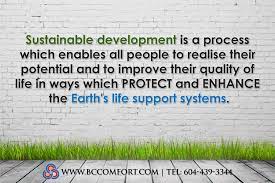
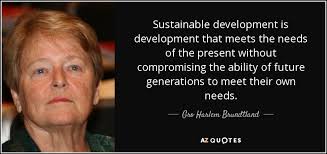 India is the current chair of the G20, a grouping of the world’s most influential countries. The summit in 2023, under India’s chairmanship, could provide the platform for addressing the ecological crisis that threatens our planets survival. The year gone by saw two lost opportunities for global collaborative action to address the challenge of climate and the associated but larger challenge of diminishing biodiversity. The outcome of the 27th Conference of Parties to the UN Framework Convention on Climate Change (COP-27) held in Sharm-el-Sheikh in Egypt in November and that of the 15th Conference of Parties to the Biodiversity Convention (COP-15) convened in Montreal, failed to live up to international expectations of urgent action to address the global ecological crisis of which climate change and biodiversity loss are twin manifestations.
India is the current chair of the G20, a grouping of the world’s most influential countries. The summit in 2023, under India’s chairmanship, could provide the platform for addressing the ecological crisis that threatens our planets survival. The year gone by saw two lost opportunities for global collaborative action to address the challenge of climate and the associated but larger challenge of diminishing biodiversity. The outcome of the 27th Conference of Parties to the UN Framework Convention on Climate Change (COP-27) held in Sharm-el-Sheikh in Egypt in November and that of the 15th Conference of Parties to the Biodiversity Convention (COP-15) convened in Montreal, failed to live up to international expectations of urgent action to address the global ecological crisis of which climate change and biodiversity loss are twin manifestations.
On this count, the UN has declared: “The ocean generates 50 per cent of the oxygen e need, absorbs 25 per cent of all carbon dioxide emissions and captures 90 per cent of the excess heat generated by these emissions. It is not just the lungs of the planet but also its largest carbon sink – a vital buffer against the impacts of climate change.”
With the dumping of plastics and hazardous waste into the oceans, their acidification and thermal expansion due to global arming, the oceans role as a carbon sink is declining. Many other such feedback loops demand a comprehensive approach to the ecological crisis perhaps through an International ecological Convention. India could, as G-20 chair, pioneer the approach. India should lead by the power of its example, not just through exhortation.
This article taken from the newsmagazine India Today, January 23, 2023.
One thought on “India@2023: Climate Change”